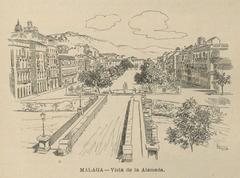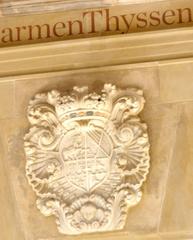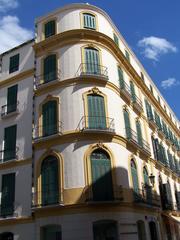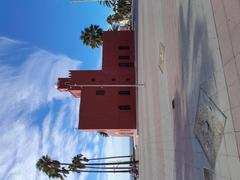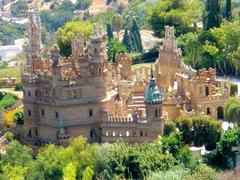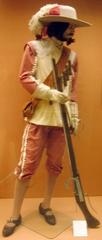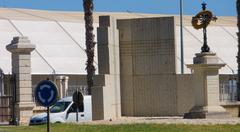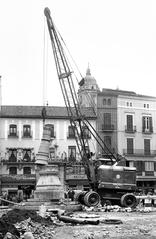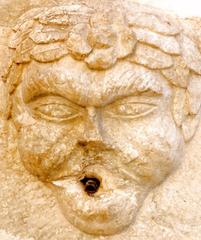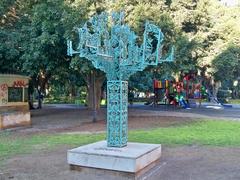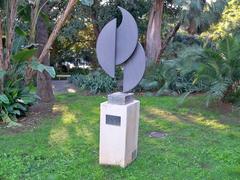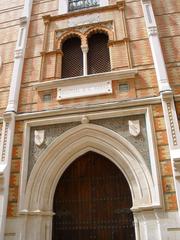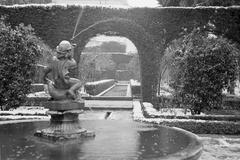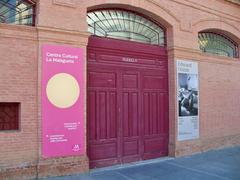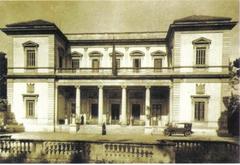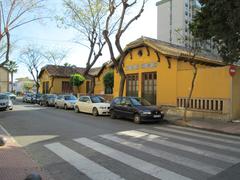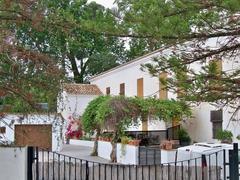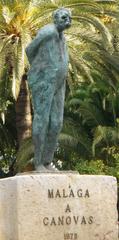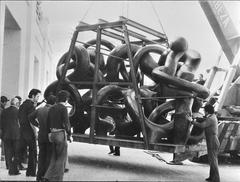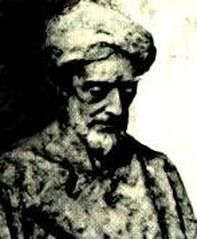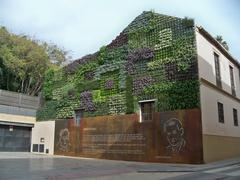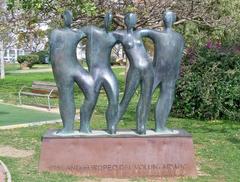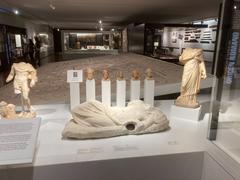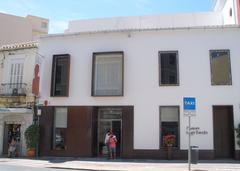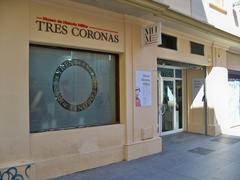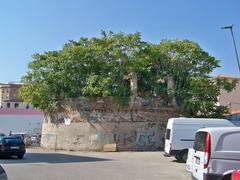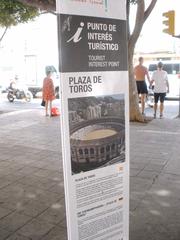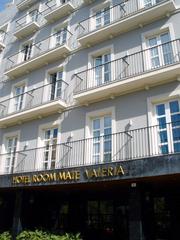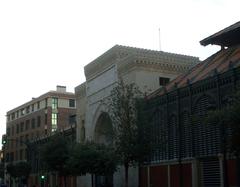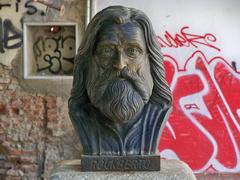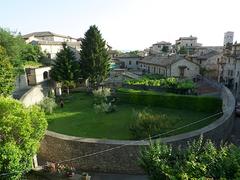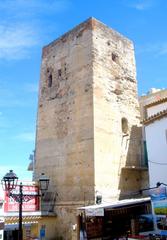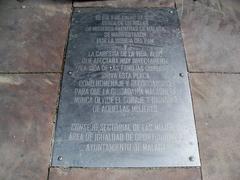Visiting the Monument to José Moreno Carbonero in Málaga, Spain: Tickets, Hours, and Tips
Date: 03/07/2025
Introduction: The Legacy of José Moreno Carbonero in Málaga
Nestled in the heart of Málaga, the Monument to José Moreno Carbonero honors one of Spain’s most influential painters and a native son whose legacy continues to shape the city’s cultural identity. Erected in the serene Jardines de Puerta Oscura, this monument stands as a gateway to Málaga’s vibrant artistic heritage, inviting visitors to reflect on the life and achievements of a master of historical painting, portraiture, and genre scenes.
Moreno Carbonero (1858–1942) is renowned for his meticulous attention to historical accuracy and emotional depth. His works, housed in prestigious institutions like the Museo Carmen Thyssen Málaga and the Museo del Prado, are celebrated both nationally and internationally (Museo Carmen Thyssen Málaga; Museo del Prado). The monument, freely accessible year-round, is an essential stop for art lovers, history enthusiasts, and travelers eager to experience Málaga’s rich cultural tapestry.
This guide offers in-depth information on visiting hours, tickets, accessibility, travel tips, and the broader historical and cultural context that makes the Monument to José Moreno Carbonero a must-see in Málaga.
Table of Contents
- Introduction
- Historical Background: José Moreno Carbonero’s Life and Artistic Impact
- The Monument: Design, Location, and Cultural Significance
- Practical Visitor Information
- Moreno Carbonero’s Artistic Style and Legacy
- Frequently Asked Questions (FAQ)
- Visitor Recommendations
- Visuals and Multimedia Suggestions
- Conclusion: Embracing Málaga’s Artistic Heritage
- References and Official Links
Historical Background: José Moreno Carbonero’s Life and Artistic Impact
Born in Málaga’s Perchel district in 1858, José Moreno Carbonero displayed remarkable artistic talent from an early age. He trained at the Escuela Superior de Bellas Artes in Málaga under Bernardo Ferrándiz, a pivotal mentor who recognized the young artist’s promise (Museo Carmen Thyssen Málaga). By age 21, Moreno Carbonero’s work was acquired by the Museo del Prado—a rare distinction that signaled his rise to national prominence.
Throughout his career, Moreno Carbonero distinguished himself with grand historical canvases, refined portraiture, and evocative genre scenes inspired by both Spanish tradition and European influences. His travels to Paris exposed him to the academic and Orientalist schools, further honing his craft (Artvee). Major works such as “El príncipe don Carlos de Viana,” “La conversión del duque de Gandía,” and “Entrada de Roger de Flor en Constantinopla” are considered milestones in 19th-century Spanish painting (Museo del Prado).
Moreno Carbonero’s acclaim extended beyond Spain, earning him medals at international exhibitions in Paris, Budapest, Berlin, and Chicago. Despite his success in Madrid and abroad, he maintained strong ties with Málaga, frequently returning to participate in cultural life and receiving the title “Hijo predilecto de Málaga” in 1928 (La Opinión de Málaga).
The Monument: Design, Location, and Cultural Significance
Installed in 1958, the Monument to José Moreno Carbonero was sculpted by Mariano Benlliure, a leading figure in Spanish sculpture known for his realistic and expressive style (Wikipedia). The bronze bust captures the painter’s dignified presence and artistic stature. Its setting in Jardines de Puerta Oscura—between the Alcazaba fortress and City Hall—integrates Moreno Carbonero’s legacy into the city’s historic and cultural core (Mapcarta).
The monument is not only a tribute to Moreno Carbonero’s artistic achievements but also a focal point for Málaga’s broader efforts to celebrate and preserve its cultural history. It often features in local guided tours, school excursions, and public events honoring the city’s artistic heritage (Wonderstays).
Practical Visitor Information
Location and Accessibility
- Address: Jardines de Puerta Oscura, Málaga, Spain
The monument is centrally situated in the lush terraced gardens that connect the Alcazaba fortress to City Hall (Mapcarta). - Accessibility: The main monument area is accessible via paved walkways. Some sections of the gardens have steps and slopes, so those with limited mobility should plan accordingly. Wheelchair users can reach the monument, but certain paths may be challenging (The Spain Travel Guru).
Visiting Hours
- Monument: Open-air and accessible 24 hours a day, year-round.
- Jardines de Puerta Oscura: Generally open from dawn until dusk (approx. 8:00 AM–10:00 PM); check official sources for seasonal variations (Official Málaga Tourism Website).
Tickets and Admission
- Monument and Gardens: Free of charge, no ticket required.
- Nearby Museums: Entry fees apply for museums such as Museo Carmen Thyssen Málaga and Museo del Prado, which house key works by Moreno Carbonero.
Getting There
- On Foot: A short walk from Málaga Cathedral, Alcazaba, and other major landmarks.
- Public Transport: Several city bus lines stop near City Hall and the Alcazaba.
- Parking: Available in nearby lots; city center parking can fill up during peak hours.
Nearby Attractions
- Alcazaba Fortress: Moorish palace with panoramic city views (The Crazy Tourist).
- Málaga Cathedral: Known as “La Manquita,” a Renaissance-Baroque landmark (Spain.info).
- Museo Carmen Thyssen Málaga: Extensive Spanish painting collection.
- Museo de Málaga: Fine arts and archaeology, including works by Moreno Carbonero.
- Picasso Museum: Celebrating Málaga’s most famous native artist.
- Port of Málaga: Modern waterfront with shops and cafes (Andalucia Lovers).
Guided Tours and Special Events
- Many Málaga walking tours feature the monument as a highlight, providing insight into the painter’s life and the city’s artistic history.
- Cultural events, such as art festivals and lectures, occasionally take place in the gardens—check local listings (Guide to Malaga).
Travel Tips
- Best time to visit: Early morning or late afternoon for optimal lighting and cooler temperatures.
- Wear comfortable shoes: The gardens are terraced and may require some walking.
- Photography: The interplay of sculpture, greenery, and city views makes for excellent photos.
- Respect the site: Maintain the tranquility of the gardens and avoid climbing on the monument.
Moreno Carbonero’s Artistic Style and Legacy
Moreno Carbonero’s art melds academic precision with narrative richness. His historical paintings, such as “El príncipe don Carlos de Viana” and “La conversión del duque de Gandía,” are celebrated for their dramatic compositions, lifelike figures, and authentic period details (Museo del Prado). His approach often involved extensive historical research, resulting in works that both educate and move viewers.
In addition to historical canvases, his portraits and genre scenes reveal technical mastery and keen psychological insight. Moreno Carbonero’s works are found in the Museo Carmen Thyssen Málaga, Museo de Málaga, and major collections worldwide (WikiArt; Artvee).
His legacy endures not only in his paintings but also in Málaga’s cultural life, where he is celebrated as a source of civic pride and an inspiration for future generations.
Frequently Asked Questions (FAQ)
Q: What are the visiting hours for the Monument to José Moreno Carbonero?
A: The monument is outdoors and accessible 24/7. The Jardines de Puerta Oscura typically open from 8:00 AM to 10:00 PM.
Q: Is there an entrance fee or ticket required?
A: No, both the monument and gardens are free to visit.
Q: Are guided tours available?
A: Yes, many walking tours of Málaga’s historic center include the monument as part of their itinerary.
Q: How do I get to the monument by public transportation?
A: City buses stop near City Hall and the Alcazaba. The area is also pedestrian-friendly.
Q: Is the monument accessible for visitors with reduced mobility?
A: The main area is accessible via paved paths, but some garden terraces involve steps and slopes.
Q: What else can I visit nearby?
A: Major attractions like the Alcazaba, Málaga Cathedral, Museo Carmen Thyssen Málaga, and Picasso Museum are all within walking distance.
Visitor Recommendations
- Allow 15–30 minutes to appreciate the monument and gardens.
- Combine your visit with nearby museums for a comprehensive cultural experience.
- Bring water and sun protection in warmer months; shaded areas can be limited.
- Check event calendars for cultural programs or festivals in the gardens.
- Download the Audiala app for guided tours and up-to-date information.
Visuals and Multimedia Suggestions
- Include high-quality images of the monument (alt text: “Monument to José Moreno Carbonero in Málaga”).
- Embed a map showing the monument’s location within the city.
- Provide links to virtual tours of Málaga’s historical sites, if available.
- Feature photos of key works by Moreno Carbonero from the Carmen Thyssen and Prado museums.
Conclusion: Embracing Málaga’s Artistic Heritage
The Monument to José Moreno Carbonero is more than a commemorative statue—it is a living testament to Málaga’s enduring cultural vitality and the universal appeal of great art. Freely accessible and centrally located, it offers visitors a chance to connect with Spanish history, discover the story of a remarkable artist, and experience the city’s vibrant urban landscape.
Plan your visit to this Málaga historical site, explore nearby museums and landmarks, and immerse yourself in the city’s artistic legacy. For event listings, guided tours, and insider tips, download the Audiala mobile app and follow Málaga’s official tourism channels.
References and Official Links
- Museo Carmen Thyssen Málaga
- Museo del Prado
- Wonderstays: Monuments in Málaga
- La Opinión de Málaga
- Mapcarta: Jardines de Puerta Oscura
- WikiArt: José Moreno Carbonero
- Artvee: José Moreno Carbonero
- The Spain Travel Guru
- Andalucia Lovers: Málaga Itinerary
- Official Málaga Tourism Website
- Guide to Malaga: Events
- The Crazy Tourist: Things to Do in Málaga
- Spain.info: Málaga Destination
